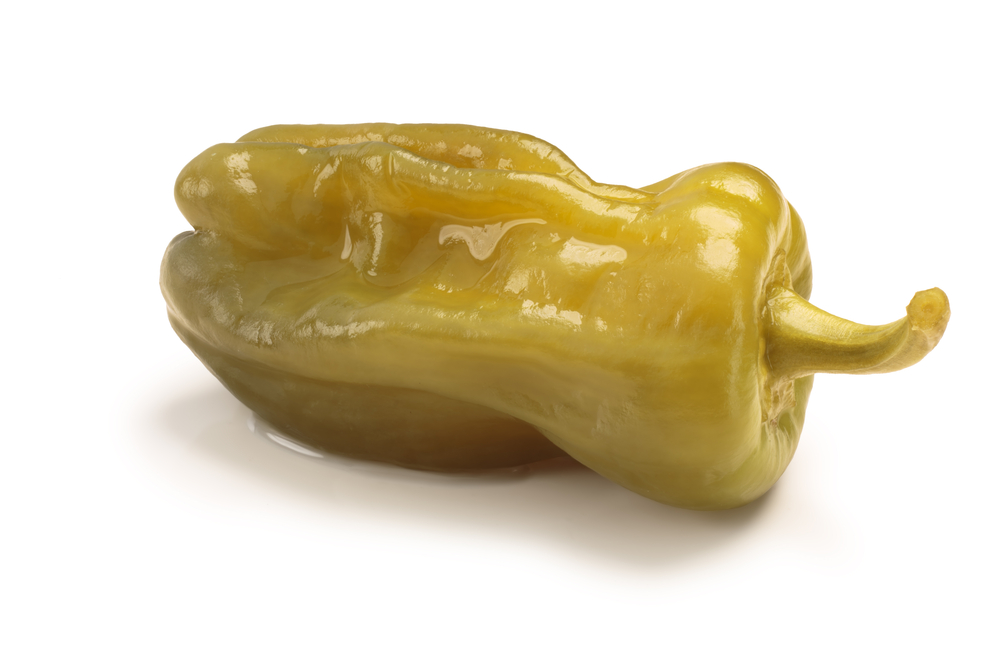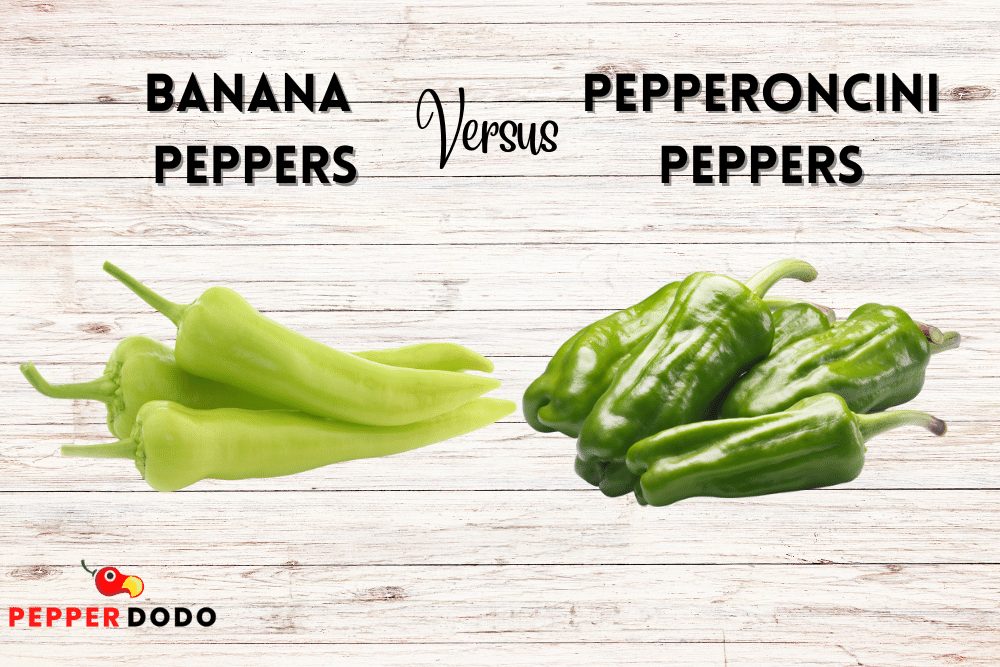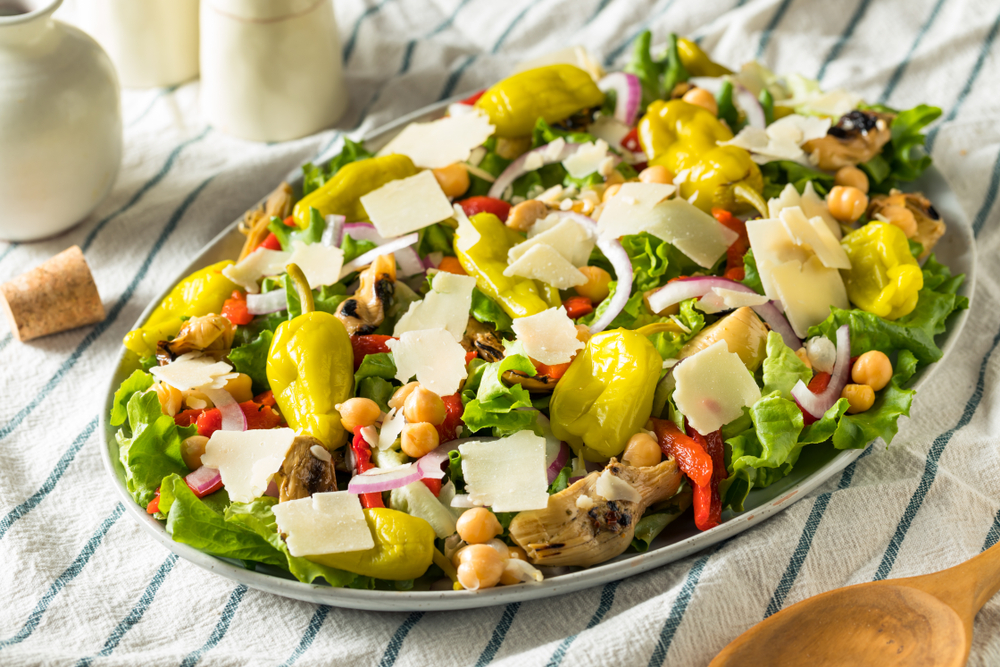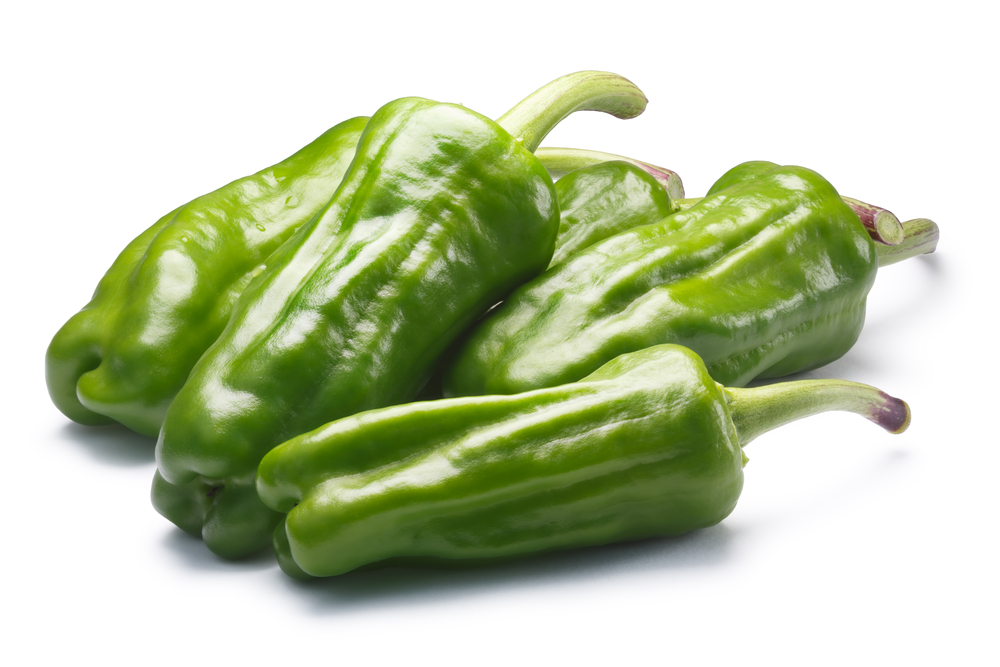Often confused with banana peppers, pepperoncini peppers are Italian and Greek peppers usually eaten pickled as a keto-friendly snack for their sweet, tangy flavor. They belong to the Capsicum annuum family and go by many Italian and English names, including mild golden Salonika peppers.
What Are Pepperoncini Peppers?
Pepperoncini peppers are sweet, mild-heat peppers from Greece and Italy. They have traveled beyond the borders of their native countries and are now widespread in the US and Eastern Europe, where they’re known by other names.
Other Names
In the US, we call them pepperoncini peppers. ‘Pepperoncini’ (singular ‘pepperoncino’) is the generic Italian name for hot peppers, especially those in the Capsicum frutescens and Capsicum annuum species.
We also call pepperoncini peppers Tuscan peppers, peperoncini (with one p less), sweet Italian peppers, mild golden Salonika peppers, or golden Greek peppers.
You’ll also commonly see them called Italian pepperoncini or peperoni (singular ‘peperone’), which shouldn’t be confused with pepperoni, the cured meat on pizza.
In Italy, pepperoncini are also called friggitelli peppers (singular ‘friggitello’). The peppers are also called golden Greek peppers or fefferoni in Greece and Eastern Europe.
Color
The pepperoncino pepper starts light yellow-green and ripens to red at full maturity. Since they are usually harvested as green to make pickled pepperoncini peppers, red pepperoncini are rare to find unless you grow your own.
Size And Shape
Pepperoncini peppers are available in two varieties, both with a tapering profile. Italian pepperoncini are longer at 4-5 inches long, while Greek pepperoncini (common in the US) are shorter at 2-3 inches. Both varieties are about 0.5-1 inches wide when mature.
Texture
The skin of pepperoncini peppers is thin and wrinkly. The peppers are crunchy and thin-walled. The crunchiness is lower in red pepperoncini as the pepper ripens and sweetens.

Are Pepperoncini And Banana Peppers The Same Thing?
Pepperoncini are often confused with banana peppers and Hungarian wax peppers because of their similar looks. However, the three peppers differ in flavor, texture, shape, and heat levels.
Both banana peppers and pepperoncini have the same apex heat score of 500 SHUs, but the former can have zero heat while the latter always has some heat, even at their lowest. Hungarian wax peppers are much hotter at 1,000-15,000 SHUs.
The pepperoncino pepper has wrinkly skin and thinner walls, while the banana pepper is smoother and has thicker walls. The thin walls of fresh pepperoncini make them unsuitable for stuffing, unlike their banana counterparts.
Pepperoncini peppers have more rounded tips compared to the pointier ends of banana peppers, which complete their overall banana-like shape.
In terms of flavor, both banana peppers and pepperoncini are similar. Both taste sweet, but the banana pepper is sweeter and tangy. The pepperoncino is less sweet and has a noticeable bitterness.

What Do Pepperoncini Taste Like?
Pepperoncini have a sweet, tangy, slightly bitter flavor. Most growers and chefs prefer them for their complex flavor rather than heat.
How Spicy Are Pepperoncini?
At only 100-500 Scoville Heat Units on the Scoville Scale, pepperoncini are mild peppers. They are potentially slightly hotter or equal in heat as Trinidad perfume peppers and banana peppers—both mild hot peppers that can potentially have zero heat.
Compared to zero-heat peppers like gypsy, Carmen, California Wonder, habanada, and bell peppers, the pepperoncino is much hotter, even at its mildest level.
How To Use Pepperoncini Chili Peppers In Cooking
Pepperoncino is versatile and can be used in many ways, including:
- Fresh pepperoncini flavor soups, stews, and cooked veggies.
- Pickled pepperoncini are eaten in Italian salad, Greek salad, pizzas, sub sandwiches, and Italian antipasto platters. Antipasto is a mixed platter containing various elements like olives, cheese, artichokes, pickled peppers, and cured meats like salami and prosciutto.
- As an alternative for banana pepper rings or pickled jalapeno peppers, and Hungarian wax peppers. Pepperoncini are mostly eaten as pickled peppers for their sweet, tangy flavor. They are excellent grabs for a low-calorie, keto snack.
- Making pizza sauce or tomato sauce for pizza.
- The pickling brine for pickled pepperoncini peppers is ideal for flavoring cooked dishes to impart a sweet, tangy taste and mild heat. Pepperoncini brine is also used as an ingredient in some Bloody Mary recipes.
- As an edible garnish in cocktails. In the famous Bloody Mary cocktail, pepperoncini are eaten in small bites as you sip the drink.
- Dry and crush into powder or make chili paste.
- In olive oil-influenced dipping sauces for crusty Italian bread.

Where To Buy Pepperoncini
Pepperoncini peppers are usually eaten pickled, meaning the fresh ones are hard to come by. You can find fresh pepperoncini at local farmer’s markets, specialty shops, and local Italian markets.
Jarred or pickled pepperoncini are available online on Amazon and other web-based pepper retailers.
Can You Grow Pepperoncini Peppers?
It’s easy to grow your own pepperoncini!
Pepperoncini pepper seeds are available from online seed vendors and Amazon. They take 10-14 days to germinate, and in about 6-8 weeks, they’re hardy enough to transplant outdoors.
The highly productive pepperoncini plants thrive in slightly rich, well-draining soils to produce fruits that mature from light green to red in 70-80 days. Too much organic material or fertilizer causes the plants to produce fewer peppers.
Substitutes For Pepperoncini Peppers
The versatility of pepperoncini peppers means they have lots of potential substitutes. You can replace the peppers with the following options:
- Banana peppers
- Hungarian wax peppers
- Pickled sports peppers
- Bell peppers.
- Anaheim peppers
- Cherry peppers.
- Poblano peppers
- Jalapeno peppers

